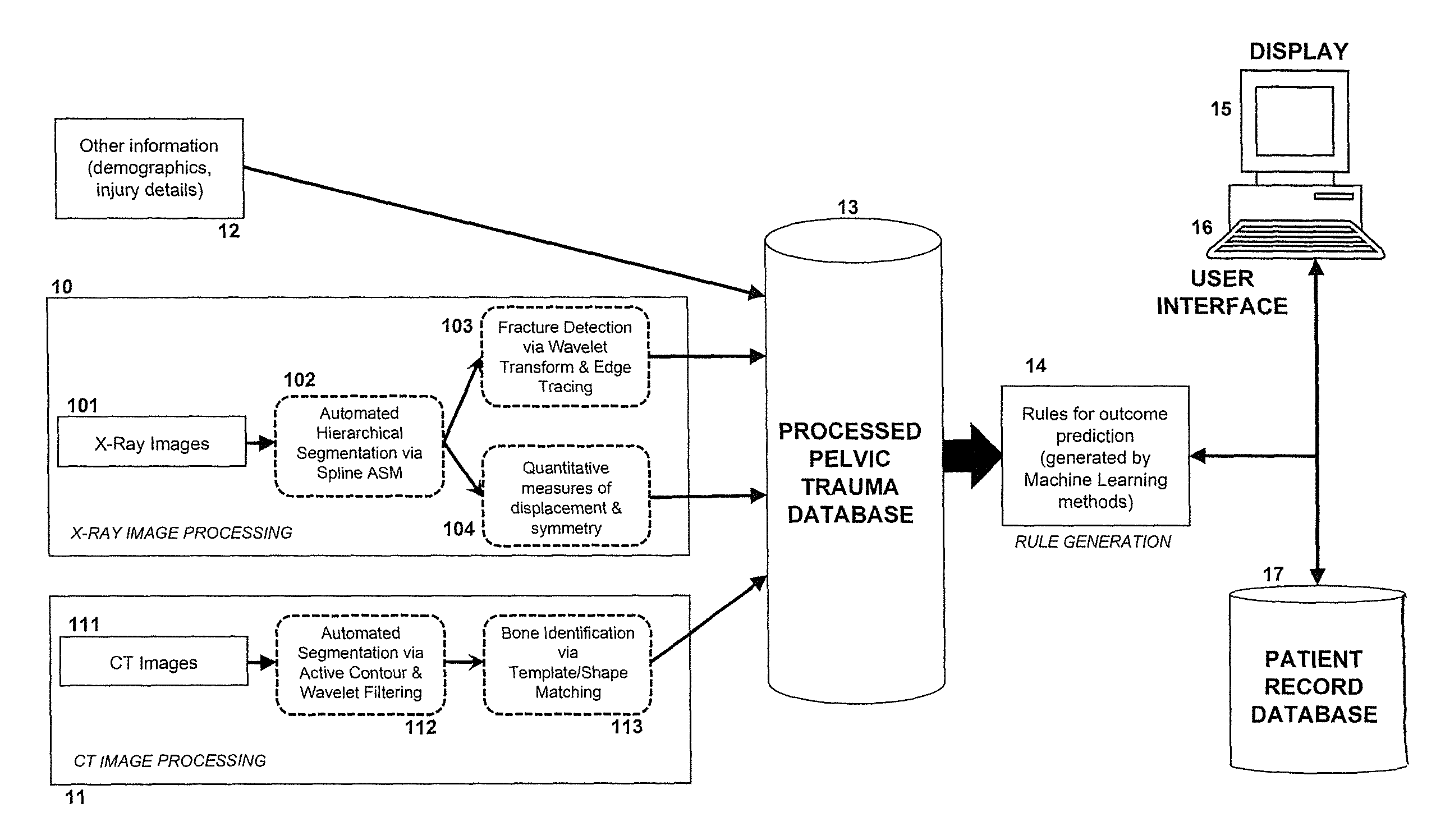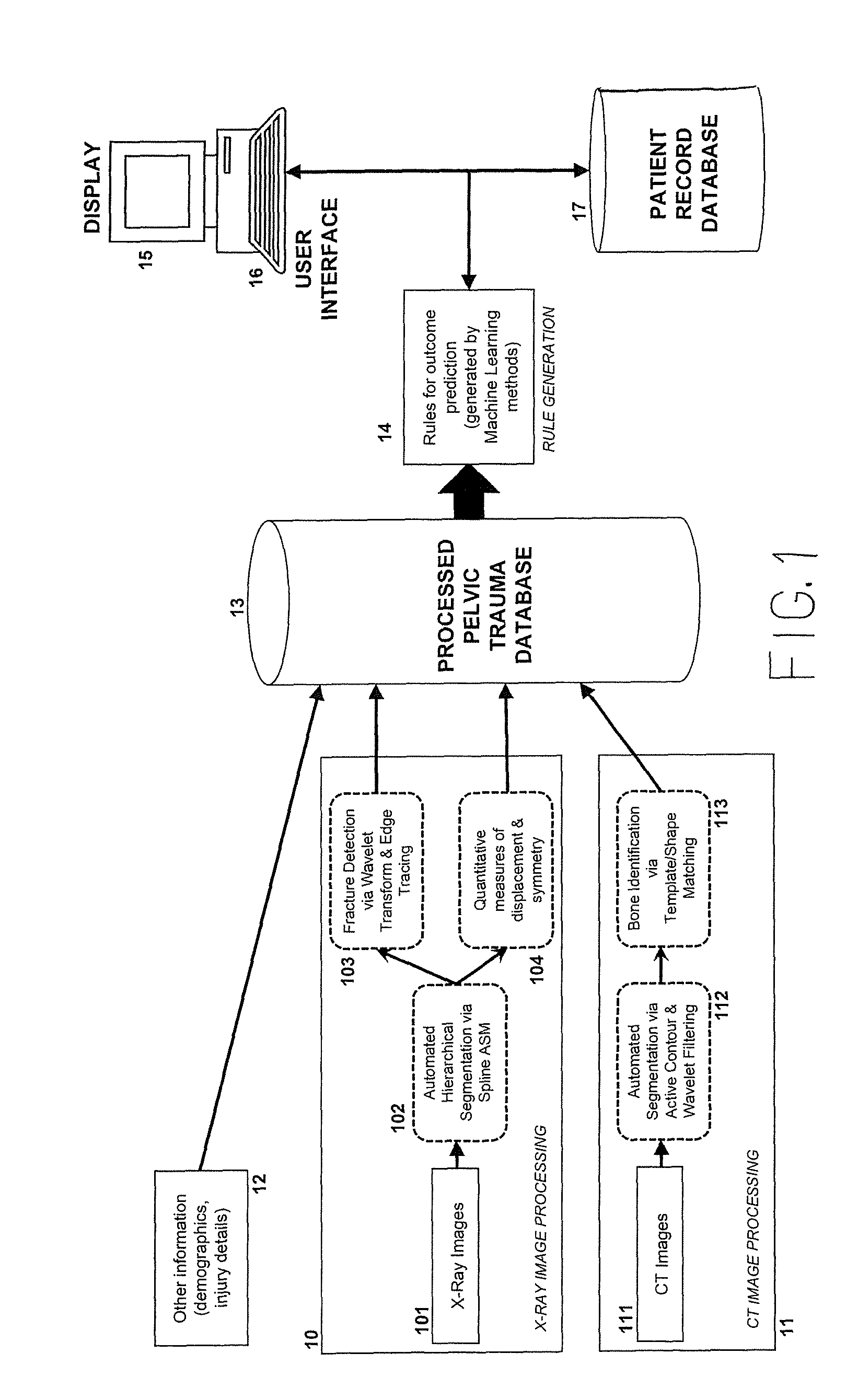Accurate pelvic fracture detection for X-ray and CT images
a pelvic fracture and accurate technology, applied in the field of automatic analysis of x-ray radiographs and computed tomography (ct) images, can solve problems such as not being used primarily, and achieve the effect of rapid and accurate treatment choices for new patients
- Summary
- Abstract
- Description
- Claims
- Application Information
AI Technical Summary
Benefits of technology
Problems solved by technology
Method used
Image
Examples
Embodiment Construction
[0030]The embodiment of the invention is described in terms of a system on which the methods of the invention may be implemented. The system is composed of various imaging components, databases and computational interfaces that one of ordinary skill in the computational arts will be familiar with. The methods of the invention are described with reference to flowcharts which illustrate the logic of the processes implemented. The flowcharts and the accompanying descriptions are sufficient for one of ordinary skill in the computer programming and image processing arts to prepare the necessary code to implement the embodiment of the invention.
[0031]Referring now to the drawings, and more particularly to FIG. 1, there is presented in block diagram form an overview of the decision support system framework, and the function that the X-ray and CT components serve. X-ray image processing is performed at 10, the X-ray images being input at 101. CT image processing is performed at 11, the CT i...
PUM
 Login to View More
Login to View More Abstract
Description
Claims
Application Information
 Login to View More
Login to View More - R&D
- Intellectual Property
- Life Sciences
- Materials
- Tech Scout
- Unparalleled Data Quality
- Higher Quality Content
- 60% Fewer Hallucinations
Browse by: Latest US Patents, China's latest patents, Technical Efficacy Thesaurus, Application Domain, Technology Topic, Popular Technical Reports.
© 2025 PatSnap. All rights reserved.Legal|Privacy policy|Modern Slavery Act Transparency Statement|Sitemap|About US| Contact US: help@patsnap.com



